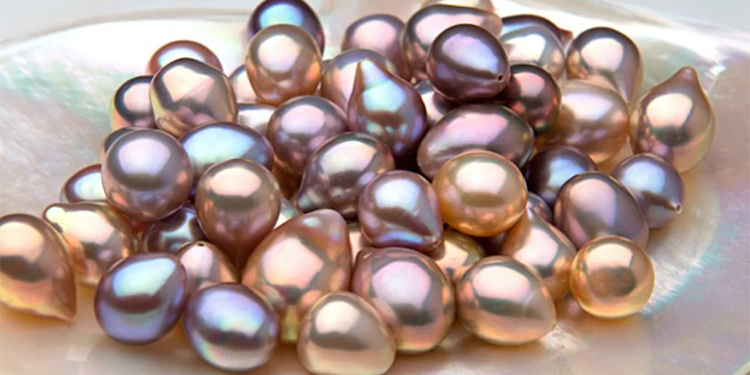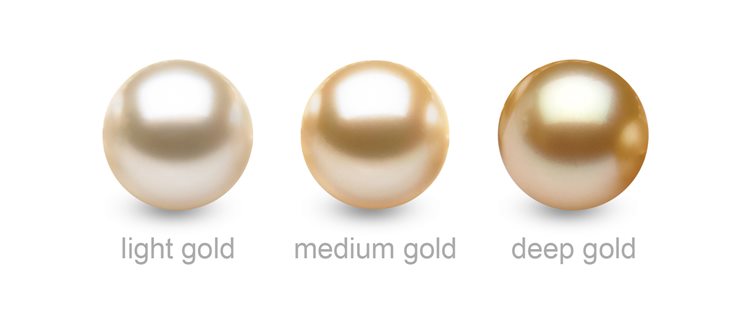One Minute to Tell You the Types of Sea Pearls

In recent years, there has been a growing interest in sea pearls, and the market offers a wide variety of sea pearls in different shapes and colors.
How should a pearl novice go about starting their journey into the world of sea pearls?
In just one minute, let's explore the realm of sea pearls!
Varieties of Sea Pearls
Rare Wild Pearls:

·Conch Pearls:
Queen Conch Pearls (also known as Large Conch Pearls) are primarily found in the western Atlantic.
The likelihood of a Queen Conch Pearl producing a conch pearl is only one in ten thousand, and only one in ten of those reach gem-quality status.
Consequently, conch pearls are even more precious than diamonds or rubies.
·Melo Pearls:
Melo Pearls (also known as Dragon Pearls or Flame Pearls) are mainly found in Southeast Asian waters, including Myanmar, Thailand, Vietnam, and the Indian Ocean-Pacific regions.
In the realm of collectibles, Melo pearls are exceedingly rare.
They exhibit an internal structure resembling fiery clouds.
Unlike traditional pearls, they possess a porcelain-like luster.
·Abalone Pearls:
Abalone Pearls showcase vibrant colors akin to opals.
Not all abalones can produce pearls; the ones that can are primarily found in New Zealand, California (USA), Mexico, Japan, and South Korea.
High-quality abalone pearls can be valued between 40,000 to 100,000 Hong Kong dollars per pearl.
It's worth noting that approximately 99% of the pearls available in the market are cultured pearls.
Wild pearls are exceedingly rare, cannot be cultivated artificially, and capturing wild animals for their pearls is illegal.
Common Cultured Pearls:

·Akoya Pearls:
Akoya Pearls are primarily sourced from the Seto Inland Sea area of Japan, including Mie, Mombetsu, and Ehime prefectures.
The Akoya pearl oysters are relatively small in size, resulting in pearls ranging from 3 to 9mm.
Akoya pearls are renowned for their strong luster, often referred to as having a "little light bulb" quality.
Learn more: How to buy the Akoya Pearls?
·Mabe Pearls:
Penguin Shells are predominantly found around Amami Island in Japan. Mabe Pearls, also known as "mabe pearls," generally refer to hemispherical pearls.
Strictly speaking, Mabe pearls are produced by Penguin Shells.
They are valued for their intense luster, rich iridescent colors, and larger size, making them highly decorative.
·Australian South Sea Pearls:
Australian South Sea Pearls are known for their thick nacre, fine and soft luster, and large size, typically ranging from 8 to 18mm.
They are often considered the royalty of cultured pearls.
White-lipped oysters, the primary source of South Sea Pearls, are mainly found in the northwestern waters of Australia, Indonesia, and the Philippines.
Because of the better quality of the Australian production, it is generally referred to as the Australian white beads "Australian white".
Among them, pearls produced in Western Australia's Broome region are particularly renowned for their high quality.
·South Sea Golden Pearls:

Golden South Sea Pearls primarily originate from the Philippines, Myanmar, and Indonesia.
They feature a smooth and delicate surface with vibrant golden colors, ranging from pale gold to deeper shades.
Light gold is the most common, while deep golden pearls are rare and highly collectible.
These pearls typically have diameters ranging from 8 to 18mm, with those exceeding 16mm being of exceptional quality and collectible value.
Some popular South Sea Golden Pearls jewelry.
·Tahitian Black Pearls:
Over 90% of Black Pearls are produced in Tahiti, making them a prized specialty of French Polynesia in the South Pacific. They are exceptionally precious and often referred to as the "Queens of Pearls."
Black South Sea Pearls generally have a pure black base color, with the most popular ones exhibiting peacock green overtones.
Grayish-toned black pearls are known as "platinum gray" pearls.
Due to their predominantly dark coloration, they are commonly referred to as "black pearls."
Learn more about Tahitian Black Pearls.
These are the main categories of saltwater pearls! After learning about these varieties, which one is your favorite?


Leave a Comment